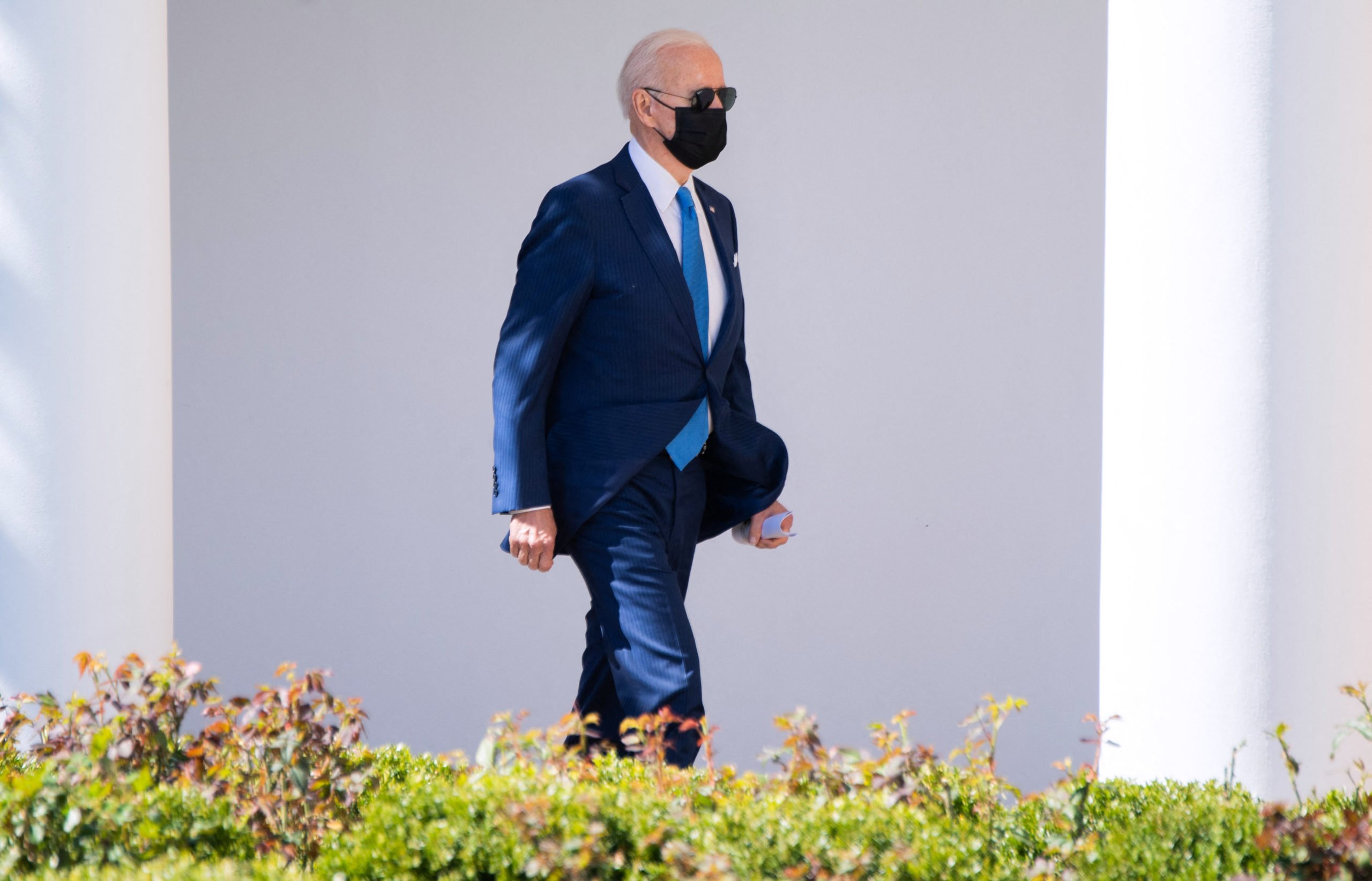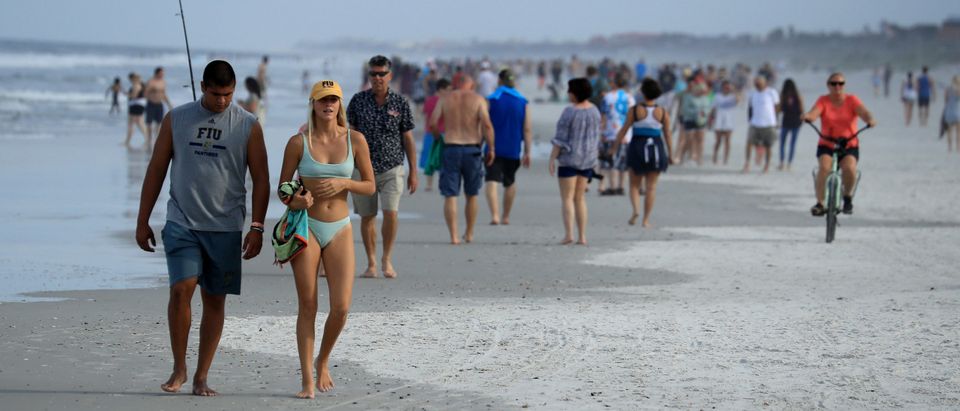- Several studies have shown a low risk of COVID-19 transmission outdoors, except when there is lengthy interaction with others at a close distance.
- Mask requirements need to be nuanced or some people will ignore the rules, according to a public health expert.
- Several cities have relaxed outdoor mask requirements this month, but many states still require outdoor masks when social distancing cannot be maintained.
It’s time for authorities to reduce outdoor masking requirements and give Americans more credit for understanding the nuances of the risks of outdoor transmission of COVID-19, multiple studies and health experts have said.
Several studies since October have shown a low risk of COVID-19 transmission outdoors, with the exception being lengthy interaction with others at a close distance.
One study, published in Environmental Research, looked at the odds of contracting COVID-19 outside, if avoiding crowded areas, in Italy’s Milan and Bergamo. Assuming a high, 10% rate of infection, the Feb. 2021 study found it would take on average, 31 days and 51 days, respectively, of continuous outdoor exposure to inhale enough of the virus to transmit infection.
Given the science, mask requirements need to be nuanced or some people will follow unnecessary rules and others will just ignore all of the rules, Dr. Ashish Jha, dean of Brown University’s School of Public Health told told NPR‘s “All Things Considered” on Wednesday.
In addition to NPR, this week stories in Slate, The New Republic and The Atlantic have questioned broad usage of masks outside, prompting backlash from critics, who say the risk is still not zero. (RELATED: A Handful Of Liberal Outlets Said No To Outdoor Masks. They Were Accused Of Trying To Get People Killed)
Several cities have dropped or relaxed outdoor mask requirements this month, including Nashville, Charleston and Denver. But many states still require outdoor masks when six feet of social distancing cannot be maintained. Maine and Massachusetts require masks outside even when social-distancing.
Israel on Sunday dropped its mandate for wearing masks outside. Health authorities still recommend mask wearing at crowded outdoor events and require masks in public indoor areas, according to The Times of Israel.
Israel has vaccinated most of its population against COVID-19. In the U.S., about a quarter of the population is fully vaccinated against COVID-19, according to the Centers for Disease Control and Prevention.
“It’s really important to be able to have a nuanced discussion of what is safe and what is not,” Jha told NPR.
Wearing masks outside “probably doesn’t do much to protect you or protect others” unless you are in a very crowded space for an extended period of time, he said.
“I think if somebody were right next to you and spending, let’s say, 10, 15 minutes running in that little stream of breath that you’re exhaling, there might be a risk. But somebody you’re running by who is there for just a second, the risk is — it’s extremely rare,” Jha added.
Another public health expert seconded the belief that Americans could have a more nuanced understanding of the need to wear masks outside.
Wearing a mask while on a walk “might be misleading people about how the virus is transmitted,” wrote Paul Sax in the New England Journal of Medicine’s Journal Watch on Monday. Passing an occasional person on the street or sidewalk without a mask won’t transmit COVID-19, Sax added.
“Here’s a bold proposal — let’s make public policy based on our best understanding of the science of SARS-CoV-2 transmission,” wrote Sax. Masks should mostly be required indoors for now, but outside they are only needed “for lengthy interactions with others at close distance.”
Authorities should not have blanket mandates for outside mask use and should focus on lowering COVID-19 exposure risk indoors, Muge Cevik, an infectious-disease and virology expert at the University of St. Andrews in Scotland, said in an April 13 article in The Washington Post.
“Given the very low risk of transmission outdoors, I think outdoor mask use, from a public perspective, seems arbitrary, and I think it affects the public’s trust and willingness to engage in much higher-yield interventions. We want people to be much more vigilant in indoor spaces,” Cevik told the Post.
COVID-19 transmission is less likely outside due to breezes dispersing the virus, and humidity and sunlight causing it to be less viable.
Studies have shown the low risk of outdoor transmission of COVID-19. A widely-cited study back in Oct. 2020 found that the risk of contracting COVID-19 while outside is relatively low. Only one instance of outdoor transmission existed among 7,324 cases of COVID-19 in China, according to the study published in the journal Indoor Air.
The instance was when “A 27‐year‐old man had a conversation outdoors with an individual who had returned from Wuhan on January 25 [2020] and had symptom onset on February 1,” the study says.

President Joe Biden walks alongside the West Wing Colonnade as he prepares to depart on Marine One from the South Lawn of the White House in Washington, DC, March 26, 2021, as he travels to Wilmington, Delaware for the weekend. (Photo by Saul Loeb/AFP via Getty Images)
More recently, a larger study has shown the low risk of contracting COVID-19 outside. Outdoor transmission caused only 262 of 232,164 cases, or 0.1% of COVID-19 cases in Ireland, according to an analysis of government data obtained by The Irish Times and published on April 5.
Other studies found a greater portion of COVID-19 cases were contracted outside than the studies in China and Ireland had. Four percent of clusters of COVID-19 cases evaluated were from outdoor transmission, which often involved crowded events, a July 2020 report by the London School of Hygiene and Tropical Medicine found. Less than 10 percent of COVID-19 transmission occurred outdoors, according to a Feb. 2021 meta-analysis of peer-reviewed papers on transmission of the virus SARS-CoV-2, which causes COVID-19. The study, published in the Journal of Infectious Diseases, noted that differences among the studies analyzed made it difficult to draw conclusions about the risks of outdoor transmission.
Data on outdoor transmission at mass gatherings is too scarce to make an evaluation of risk, caution Canterbury Christ Church University’s Professor Mike Weed and Abby Foad in a related September 2020 study.
I must agree. I am generally a hawk about maintaining rules with a clear benefit. Outdoor masking has notable costs and really no evidence of benefits https://t.co/tYTDm9slVX
— Marc Lipsitch (@mlipsitch) April 19, 2021
“As we’ve come to know more about the virus, as vaccinations are ramping up, and as we’re trying to figure out how to live with some level of COVID in a sustainable way, masking up outside when you’re at most briefly crossing paths with people is starting to feel barely understandable,” Slate senior editor Shannon Palus wrote on April 17.
The purpose of masks is to reduce infection and thus their continued use should not be justified by arguing that masks signal solidarity or courtesy, Natalie Shure wrote at The New Republic on April 19. New variants of COVID-19 have similar methods of outdoor transmission and thus risk, she said.
All content created by the Daily Caller News Foundation, an independent and nonpartisan newswire service, is available without charge to any legitimate news publisher that can provide a large audience. All republished articles must include our logo, our reporter’s byline and their DCNF affiliation. For any questions about our guidelines or partnering with us, please contact licensing@dailycallernewsfoundation.org.


